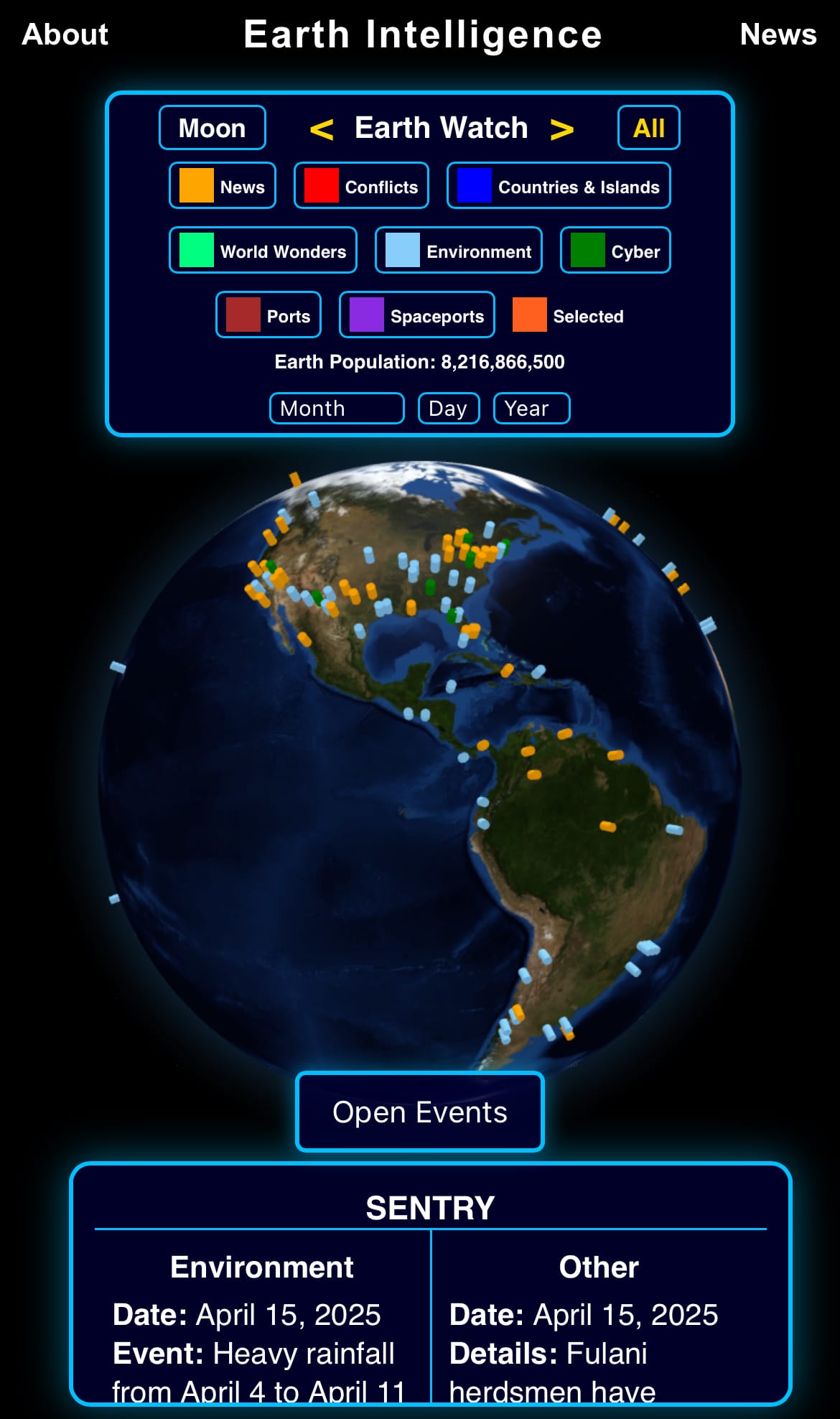Wednesday☕️

Trending:
- Yesterday, May 13, 2025, U.S. President Donald Trump announced the lifting of all U.S. sanctions on Syria during a visit to Saudi Arabia. This decision follows the collapse of the Assad regime in December 2024 and aims to support Syria’s interim government, led by President Ahmed al-Sharaa, in its efforts to stabilize and rebuild the country. The sanctions, imposed for over a decade, targeted Syria’s economy and government.

- The interim government welcomed the move, describing it as a critical step toward economic recovery and reconstruction. The removal of sanctions marks a significant change in U.S.-Syria relations, with potential implications for Syria’s sovereignty and regional dynamics.
Economics & Markets:
- Yesterday’s U.S. stock market:

- Today’s commodity market:

- Today’s crypto market:

Geopolitics & Military Activity:
- On May 12, 2025, intense fighting broke out in Tripoli, Libya, between the RADA Special Deterrence Forces and the 444th Brigade, both groups operating under the nominal authority of the Government of National Unity (GNU). The conflict began following the assassination of Abdel Ghani al-Kikli, head of the Stability Support Authority (SSA), during a meeting at the 444th Brigade’s Al-Takbali camp. The killing, reportedly under the guise of negotiations, prompted immediate retaliation from SSA-affiliated fighters, escalating into wider clashes. The 444th Brigade captured Tripoli’s seaport, while RADA forces seized the transportation headquarters near Nasser University and worked to regain lost ground. Concurrently, reports indicate that Khalifa Haftar’s Libyan National Army (LNA) is moving westward from Benghazi toward Tripoli, possibly aiming to exploit the instability.

- The clashes involve heavy fighting, including armored vehicle confrontations along the Tripoli Coastal Road, disrupting the capital. RADA has received reinforcements from Zawiya, while the 444th Brigade is supported by other GNU-aligned units, such as the 111th Brigade. On May 13, 2025, GNU Prime Minister Abdul Hamid Dbeibeh issued a decree dissolving RADA and ordering its assets transferred to the Ministry of Interior, a move that risks further escalation. This conflict, the most significant in Tripoli since 2023, underscores Libya’s fragile security environment, where competing armed groups and political factions continue to challenge the GNU’s authority and national stability.
Environment & Weather:
- On May 13, 2025, a rapidly spreading wildfire in Russia’s Amur Region consumed over 3,000 hectares (7,413 acres) near the Vostochny Cosmodrome, a key space launch facility. Strong winds have driven the fire close to the town of Tsiolkovsky, home to approximately 6,000 residents, blanketing the area in thick smoke. The blaze has approached residential zones and a gas boiler station, leading to a response from over 70 firefighters and 20 firefighting vehicles working to contain it. Roscosmos, Russia’s space agency, reported that the cosmodrome’s operations remain unaffected, and local authorities indicate the fire is partially contained, with no evacuation ordered for Tsiolkovsky.

- This wildfire is part of a broader surge of fire activity across Russia’s Far East and Siberia, fueled by dry conditions and high winds in 2025. Authorities have noted that this year’s wildfire season could be among the most severe on record, with over 110 fires reported in Siberia by early April. While the Vostochny Cosmodrome currently faces no direct threat, the fire underscores the vulnerability of critical infrastructure and nearby communities to Russia’s escalating wildfire challenges. Firefighting efforts continue to focus on preventing further spread, though shifting weather conditions keep the situation unpredictable.

Space:
- Today, May 14, 2025, China conducted a successful launch of a Long March-2D rocket from the Jiuquan Satellite Launch Center in northwest China. The rocket carried a group of satellites, described as a space computing constellation, into their intended orbit. The satellites are designed to support space-based computing, likely for data processing or communication purposes, though detailed information about their specific functions has not been publicly released.
- The Long March-2D rocket, known for its reliability in delivering payloads to low-Earth and sun-synchronous orbits, performed as expected, contributing to China’s active space program in 2025. The space computing constellation is part of China’s broader push to advance its space capabilities, focusing on scientific, commercial, and potential military applications.
Statistic:
- Largest public telecommunications companies by market capitalization:
- 🇺🇸 T-Mobile US: $269.48B
- 🇨🇳 China Mobile: $236.92B
- 🇺🇸 AT&T: $190.32B
- 🇺🇸 Verizon: $179.82B
- 🇩🇪 Deutsche Telekom: $173.82B
- 🇺🇸 Comcast: $129.89B
- 🇮🇳 Bharti Airtel: $128.02B
- 🇺🇸 American Tower: $95.48B
- 🇨🇳 China Telecom: $93.49B
- 🇯🇵 NTT (Nippon Telegraph & Telephone): $85.62B
- 🇯🇵 SoftBank: $74.04B
- 🇯🇵 KDDI: $69.89B
- 🇸🇦 Saudi Telecom Company: $61.16B
- 🇺🇸 Charter Communications: $57.70B
- 🇲🇽 America Movil: $52.79B
- 🇸🇬 Singtel: $47.03B
- 🇺🇸 Crown Castle: $42.81B
- 🇦🇪 Emirates Telecom (Etisalat Group): $40.49B
- 🇫🇷 Orange: $37.93B
- 🇭🇰 China Unicom: $35.04B
- 🇹🇼 Chunghwa Telecom: $33.17B
- 🇦🇺 Telstra: $33.10B
- 🇨🇭 Swisscom: $32.80B
- 🇪🇸 Telefónica: $28.16B
- 🇹🇭 Advanced Info Service (AIS): $27.12B
History:
- The development of modern telecommunications networks began in the late 19th century with the invention of the telephone by Alexander Graham Bell in 1876, which laid the foundation for wired communication. By the early 20th century, companies like AT&T in the United States emerged as dominant players, building extensive copper-wire networks to connect households and businesses. The introduction of radio and microwave technologies in the mid-20th century enabled long-distance and wireless communication, while the 1980s marked a pivotal shift with the breakup of AT&T’s monopoly in the U.S. and the rise of digital networks.
- The advent of fiber-optic cables in the 1990s revolutionized data transmission, offering higher speeds and capacity. Meanwhile, the commercialization of the internet and the launch of 2G mobile networks in the early 1990s spurred the growth of mobile telecommunications, with companies like Nokia, Ericsson, and Motorola leading innovation in handsets and infrastructure.
- In the 21st century, telecommunications networks evolved rapidly with the deployment of 3G, 4G, and 5G mobile networks, enabling high-speed internet, video streaming, and IoT connectivity. Major companies like Verizon, AT&T, China Mobile, and Vodafone expanded global infrastructure, while tech giants such as Google and Amazon entered the sector through cloud services and undersea cables. Starlink, operated by SpaceX, has introduced a transformative satellite-based internet service, delivering high-speed connectivity to underserved and remote regions worldwide. Despite consolidation, the industry remains diverse, balancing innovation with challenges like infrastructure costs and digital divides.
Image of the day:

Thanks for reading!
Earth is complicated, we make it simple.
Click image to view the Earth Intelligence System:



Support/Suggestions Email:
earthintelligence@earthintel.news




